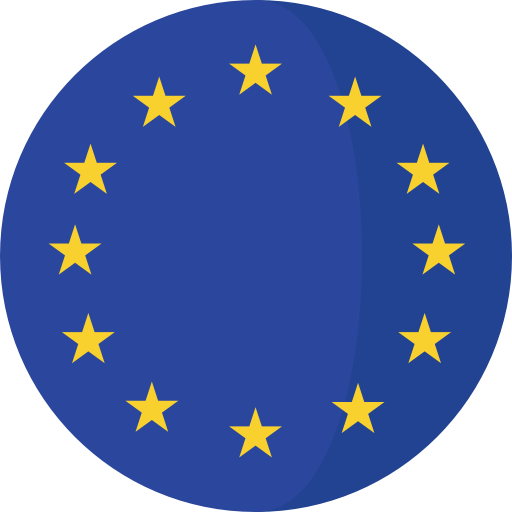In a remarkable breakthrough for epilepsy treatment, two Belgian university hospitals, UZ Ghent and Saint-Luc, have successfully implanted a pioneering neurostimulation system in two patients.
This groundbreaking procedure marks the first time this innovative technology has been utilized worldwide, offering new hope for those affected by this debilitating neurological condition.
Epilepsy, characterized by recurrent seizures, affects an estimated 50 million people globally, according to the World Health Organization (WHO).
While many patients can manage their symptoms through anti-seizure medications, approximately 30% of individuals with epilepsy do not respond to these treatments, leaving them with few options.
The recent success of the NAO.VNS (Vagus Nerve Stimulation) system represents a significant advancement for these patients, as noted by neurologist Kristl Vonck from UZ Ghent.
“This neurostimulation technology is a major step forward for patients with drug-resistant epilepsy,” Vonck stated. “It provides an alternative treatment option that has the potential to significantly improve their quality of life.”
The NAO.VNS system employs optoelectronic technology, combining a pulse generator and electrodes that encircle the vagus nerve. This nerve plays a crucial role in connecting various brain structures involved in seizure activity.
The system works by delivering electrical pulses through the vagus nerve, which may reduce or eliminate seizures over time. According to Vonck, patients can expect to see improvements within a few months after implantation.
In addition to its therapeutic benefits, the NAO.VNS system boasts several technical advancements that enhance its usability.
For instance, the system includes a fast-charging feature that allows patients to quickly recharge the device, minimizing disruption to their daily lives.
Furthermore, the reduced reliance on metal components means patients can safely undergo MRI scans—an important consideration for personalizing and refining neurostimulation treatments, as highlighted by Riëm El Tahry, a neurologist at Saint-Luc.
“The ability to perform MRI examinations is crucial,” El Tahry explained. “It allows us to monitor the brain’s activity and make necessary adjustments to the neurostimulation process, thereby enhancing the overall treatment efficacy.”
The new neurostimulation technology was implemented as part of the AURORA study, a clinical trial designed to assess the safety and effectiveness of the NAO.VNS system.
Attila Borbáth, CEO and co-founder of Synergia Medical, the manufacturer behind the device, expressed optimism about the system’s potential.
“Our goal is to facilitate the precision of future treatments while minimizing the invasiveness of medical procedures for patients,” Borbáth said.
“This technology represents a significant advancement in how we approach epilepsy treatment, and we are excited about the possibilities it holds.”
The NAO.VNS system not only seeks to improve patient outcomes but also aims to address the limitations of traditional epilepsy treatments.
Current medications can have significant side effects, and their efficacy varies from person to person. By contrast, neurostimulation provides a targeted approach that may be more effective for individuals who have not responded to pharmacological therapies.
As part of the AURORA study, Synergia Medical will closely monitor the safety and efficacy of the new system over the next two years. This follow-up will provide valuable data on the long-term effects of the treatment and its impact on patients’ lives.
The success of the first two implantations has generated excitement within the medical community and offers hope to the many individuals living with epilepsy.
The ability to provide an alternative treatment option may alleviate the burden of uncontrolled seizures and improve the overall quality of life for patients who have long faced challenges with existing therapies.
In recent years, advancements in medical technology have paved the way for innovative treatments for various neurological conditions.
The successful implementation of the NAO.VNS system aligns with a growing trend of using neurostimulation and other advanced therapies to address conditions previously considered difficult to manage.
This not only enhances treatment options but also reflects a broader understanding of the complexities of neurological disorders.
The collaboration between UZ Ghent, Saint-Luc, and Synergia Medical exemplifies the importance of partnerships in advancing healthcare technology.
By working together, these institutions have made significant strides toward improving the lives of individuals with epilepsy and potentially transforming the landscape of epilepsy treatment.
The broader implications of this development extend beyond the immediate benefits to patients. If successful, the NAO.VNS system could pave the way for similar applications in treating other neurological conditions, such as depression and chronic pain.
The versatility of neurostimulation technology holds promise for a range of therapeutic uses, potentially revolutionizing how healthcare providers approach the management of complex neurological disorders.
As the world watches the progress of the AURORA study, there is cautious optimism about the future of epilepsy treatment.
The advancements achieved by UZ Ghent, Saint-Luc, and Synergia Medical not only represent a significant milestone in medical technology but also embody the hope and resilience of those living with epilepsy.
With ongoing monitoring and potential future improvements, the NAO.VNS system may become a cornerstone in the management of epilepsy, offering new possibilities for patients seeking relief from their condition.
The commitment of the medical community to explore innovative solutions reflects a dedication to enhancing patient care and addressing the challenges faced by individuals with epilepsy worldwide.
In summary, the successful implantation of the NAO.VNS system by Belgian hospitals marks a historic moment in the treatment of epilepsy.
As research and monitoring continue, this groundbreaking technology offers hope for improved outcomes and a brighter future for those affected by this challenging neurological condition.
